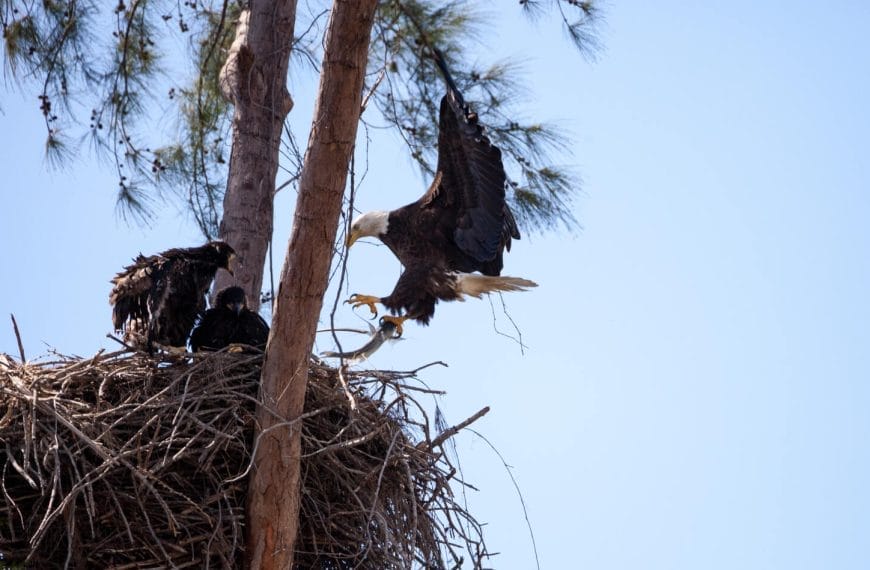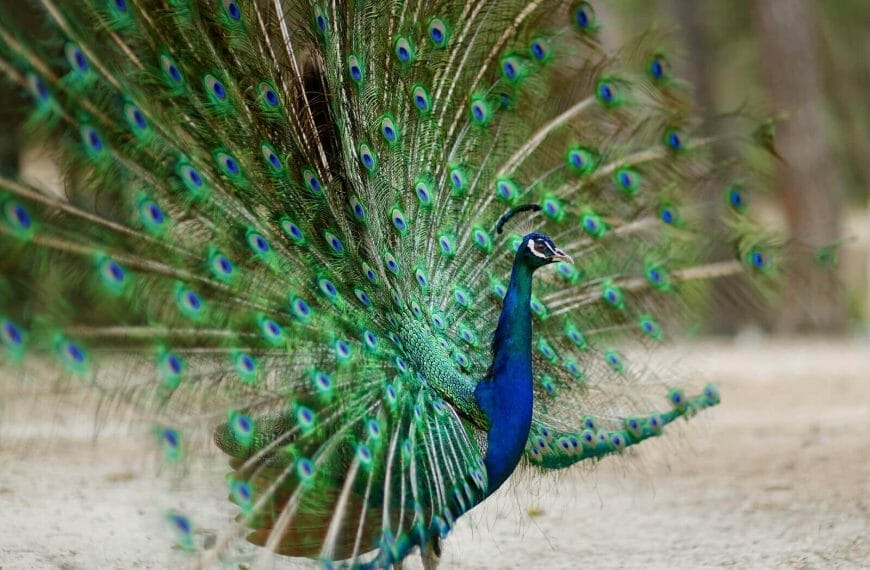Sandhill cranes are an intriguing type of bird that is renowned for their extensive migrations and extended periods of being paired.
So Do Sandhill Cranes Mate for Life? Pairs of sandhill cranes are considered socially monogamous, which means that mated birds will form long-term bonds and share the responsibility of caring for their young. Mating and egg fertilization outside of the bonded pair does occasionally occur.
Although most of them are lifelong partners, a small number of exceptions have been observed, and not all pairs of sandhill cranes are truly committed to monogamy
Sandhill cranes often form long-lasting relationships and share the duties of raising their offspring. Although they are considered socially faithful, there may be cases where they mate and fertilize eggs with other birds.
Typically, pairs of cranes stay together until one of them dies. Nevertheless, when a pair loses their breeding ground or fails to reproduce, they may split up.
It seems that producing offspring reinforces the bond between mates, which is a logical evolutionary development.
From a crane’s perspective, it’s preferable to be paired with a mate who can produce healthy and flourishing colts.
In this article, we will examine the process of sandhill crane courtship and the formation of pairs in more depth. Keep reading to learn more!

Do Sandhill Cranes mate for life?
Yes, Sandhill Cranes mate for life. When they form a pair bond, it can last for years, until one of the cranes dies.
If one member of a pair dies, the surviving member may reuse its previous nesting area with a new mate.
After a mate passes away, the surviving crane will seek out a new mate.
Pair formation in Sandhill Cranes generally occurs during spring migration.
Males perform a courtship dance to attract a female’s attention.
Once a bonded pair forms, separation is unlikely unless one mate dies

Sandhill Cranes and Offspring
Sandhill Cranes form lifelong partnerships to increase the chances of their offspring’s success.
Shortly after hatching, crane chicks are able to move around and follow their parents in search of food.
These young cranes stay with their parents for approximately 9 to 10 months, accompanying them on their migration journey during the fall season.
When both parents remain close by, they can share the responsibility of watching over and protecting their young, providing a sense of security and reducing the risk of danger or harm.
Furthermore, due to their extended time living together as a family, both parents can more easily divide the burden of nurturing and safeguarding their offspring.

How do Sandhill Cranes attract a mate?
During the spring season, sandhill cranes commonly engage in the act of pairing up migration in order to catch a female’s eye, the male does a dance.
If two mates become bonded, they are unlikely to part unless one of them dies.
Further below, we will delve into a more thorough examination of courtship and the formation of pairs.

Sandhill Cranes Courtship Behavior
As mentioned earlier, male animals use a courtship dance to catch the attention of females.
There are eight different types of courtship displays that take place between potential mates or bonded pairs.
Paired adult animals display three behaviors including:
- Non-aggressive calls
- Bill up
- Copulation
These displays help strengthen the bond between the pair and increase the chances of successful reproduction.
All sandhill cranes, whether alone or in pairs, exhibit the remaining five displays.

Three of these aim to capture notice, which are:
- The horizontal head pump
- The vertical toss
- The upright wing stretch
The male cranes use the wing stretch primarily to catch the female’s interest, while both genders utilize the horizontal head pump.
The vertical toss is believed to precede dancing during courtship.
The male will perform a series of dance moves which consists of the bow and the vertical leap. This is the last step in the process of courting female sandhill crane.
Nevertheless, it’s worth mentioning that dancing isn’t solely limited to courtship for these birds.
They may dance all year round, and occasionally, a large group of them will dance together.

Sandhill Cranes Pair Formation
Sandhill cranes may form pairs at a young age of 2 to 3 years; however, mating and initiating numerous nests commonly commence at the age of 5-6.
Almost all birds become successfully paired by the age of 8.
In most cases, a pair of sandhill cranes that have bonded will stay together for their entire lives.
It’s uncommon for adult cranes to separate unless they experience a failed breeding attempt or their nest is destroyed.
Additionally, even if a pair loses their nest, they usually still stick together.
Juvenile sandhill cranes, typically under the age of five or six, sometimes seek out new partners when engaging in courtship behaviors and nesting.
However, fully grown adult cranes very rarely separate from their mate without a specific reason.
What is The Frequency of Sandhill Crane’s Mating Every Year?
Sandhill cranes engage in mating and egg-laying only once annually.
If the initial attempt at producing offspring fails and it is still early in the breeding period, a pair will attempt to lay eggs and rear another clutch.
Sandhill cranes cannot have more than one successful clutch within a year due to lack of time.
The crane colts stay with their parents for about 9 to 10 months and accompany them to their winter migration locations.
What Happens When a Sandhill Crane Partner Passes Away?
In cases where a sandhill crane’s partner passes away, the living bird will search for a new mate.
If this happens at the beginning of the breeding season, the crane may find another partner quickly and be able to breed during that same season.
However, if the loss happens later on, the surviving crane may not form a new bond until the spring migration, which is when most new pairs are typically established.
Is it possible for Sandhill Cranes to grieve over the death of their partner?
There is limited information regarding whether sandhill cranes experience grief after their partner’s death, but it is possible that they do.
Investigations have disclosed that bonded couples mourn and conduct ceremonies when they lose their offspring.
Also, other bird types, including different types of cranes, exhibit mourning behavior when their mate passes away.
Is It Common For Female Sandhill Cranes to Form Mating Pairs With Other Females?
It seems that female sandhill cranes don’t mate or establish relationships with other female cranes.
However, there have been instances where two female cranes engage in courtship rituals with each other, possibly as a way to prepare for finding a mate.
Further investigation is needed to better understand this behavior.
FAQ
Do Sandhill Cranes Mate For Life, And How Do They Establish a Pair Bond?
Yes, Sandhill Cranes do mate for life, establishing a strong pair bond through long-term pair bonding behaviors such as performing a courtship dance to attract the attention of a potential mate.
Once the bond is formed, male and female cranes cooperate in building a nest and raising their young.
What Happens if a Sandhill Crane’s Mate Dies or There Is a Loss of a Mate?
If a Sandhill Crane loses its mate due to death or other circumstances, the surviving crane would eventually seek out a new partner to form another pair bond and continue mating and nesting activities in the future.
Where do Sandhill Cranes Build Their Nests, And What Materials Do They Use?
Sandhill Cranes build their nests in areas with dense vegetation, often in wetlands, marshes, or prairies.
They construct nests using surrounding materials such as grasses, reeds, and twigs, creating a raised platform to protect the eggs from potential predators and flooding.
How Many Subspecies of Sandhill Cranes Are There, And Can They Be Identified By Differences In Nesting Behaviors?
There are six subspecies of Sandhill Cranes, including the Florida Sandhill Crane and Greater Sandhill Crane.
While their nesting behaviors are similar, differences may be observed in the choice of nest site, size, and materials used in nest construction, reflecting various adaptations to their respective habitats.
How Do Sandhill Cranes Incubate Their Eggs, And What Is The Role Of Each Parent?
Both male and female Sandhill Cranes share the responsibility of incubating the eggs in the nest.
They take turns sitting on the nest and caring for the eggs while the other parent forages for food or keeps watch for predators.
How Many Eggs Do Sandhill Cranes Typically Lay In a Single Nesting Cycle, And How Long Does Incubation Last?
Sandhill Cranes usually lay one or two eggs per nesting cycle. Both parents share responsibility for incubating the eggs, which lasts for about 29-32 days until the eggs hatch and the young birds emerge.
What Are Some Interesting Facts About Young Sandhill Cranes And Their Development After Hatching?
Young Sandhill Cranes, known as colts, are able to leave the nest and walk around within a few hours of hatching.
They follow their parents to learn how to forage for food and develop essential survival skills. It is also interesting that young birds can fly as soon as 65-100 days after hatching.
How Do The Flock Dynamics Of Sandhill Cranes Change During Migration, And What Impact Does This Have On Mate Selection And Nest Building?
During Sandhill Crane migration, cranes may form larger flocks with varying social hierarchies.
This change in flock dynamics can impact mate selection, as it provides more opportunities for individuals to engage in pair bond formation and perform courtship behaviors.
The nesting behaviors of different subspecies may influence their choice of nesting sites during migration.
Are There Any Specific Nest Characteristics That Can Increase The Likelihood Of Successful Breeding In Sandhill Cranes?
Yes, the construction and location of Sandhill Crane nests play a crucial role in successful breeding. Ideally, nests should be built in areas with dense vegetation, providing sufficient cover to protect the eggs and young birds from predators.
Additionally, nests should be built on elevated platforms to help prevent flooding and ensure greater safety for the brood.
How Do Sandhill Cranes Communicate With Each Other, Particularly During Nesting And Mating Activities?
Sandhill Cranes communicate with each other through a variety of vocalizations, including calls made in unison by both members of a pair.
Some calls help coordinate nesting activities such as incubating the eggs or foraging, while others are used to strengthen pair bonds.
They also use body language, such as courtship dances, to communicate with potential mates and maintain established relationships.
















![How to Keep Birds Off Your Boat: Ways and [Best] Deterrents to Keep Birds Away From Your Boat](https://ekz2dfuukk8.exactdn.com/storage/2023/05/how-to-keep-birds-of-your-boat-870x570.jpg?strip=all&lossy=1&ssl=1)










![How to Identify Turkey Feathers [Ultimate Guide]](https://ekz2dfuukk8.exactdn.com/storage/2023/03/HOW_TO_IDENTIFY_TURKEY_FEATHERS.jpg?strip=all&lossy=1&ssl=1)



